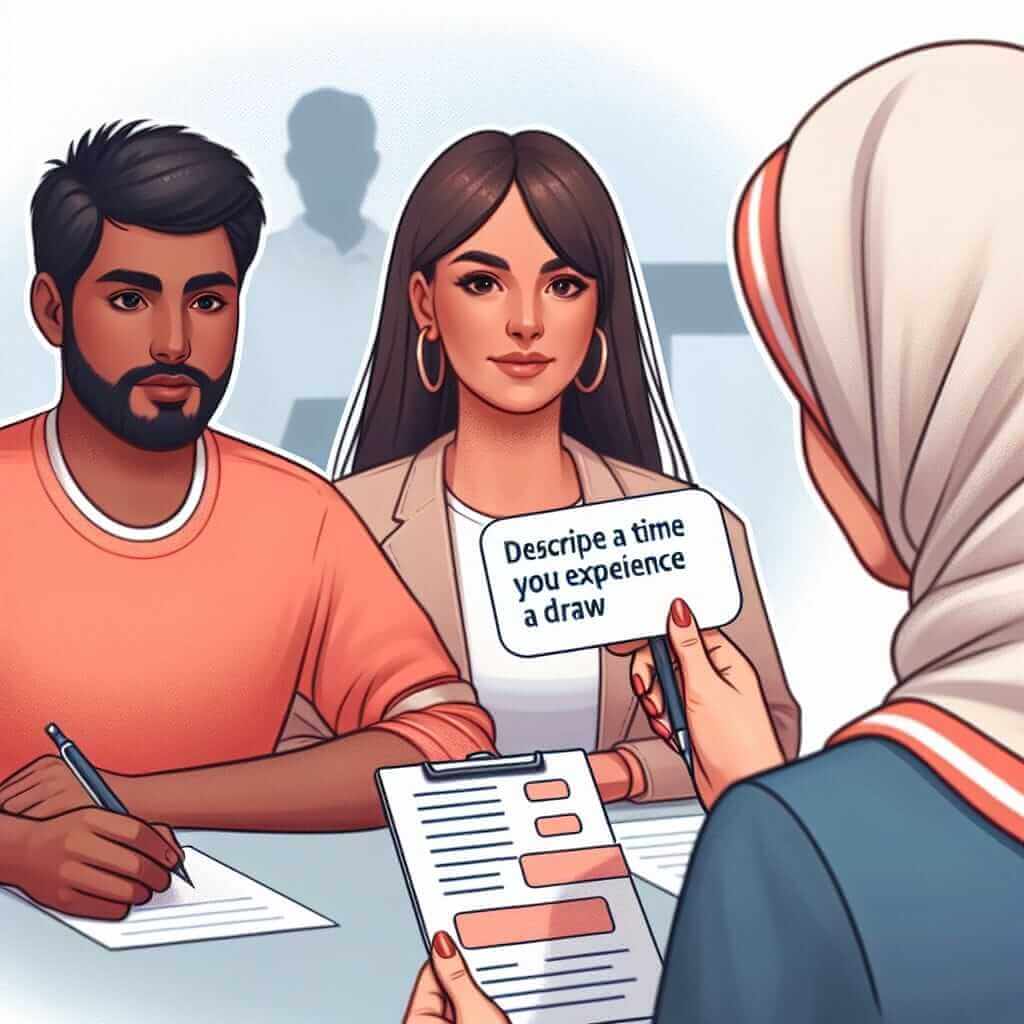In the IELTS exam, particularly in the Speaking section, you might find yourself needing to describe a range of outcomes, including a “draw.” Whether it’s a sporting event, a competition, or even a stalemate situation, knowing how to articulate a “draw” effectively can showcase your vocabulary and fluency. This article will guide you through various ways to describe a draw, providing definitions, examples, and practical tips to help you excel in your IELTS exam.
Understanding the Meaning of a “Draw”
In its simplest form, a “draw” refers to a situation where there’s no clear winner. Both sides or all involved parties have performed equally, leading to an undecided result. Now, let’s explore some synonyms and related terms that can help you express this concept more diversely:
Synonyms for “Draw”
- Tie: This is a very common synonym for “draw,” frequently used in sports and games.
- Example: The football match ended in a tie.
- Deadlock: This term implies a standstill, often used in negotiations or conflicts.
- Example: The peace talks reached a deadlock, with neither side willing to compromise.
- Stalemate: Similar to “deadlock,” this describes a situation where no progress can be made.
- Example: The chess game ended in a stalemate, with neither player able to checkmate the other.
- Even: This emphasizes the equal standing of both sides.
- Example: The two teams were very even, and it was no surprise that the game ended in a draw.
Describing a Draw in Different Contexts
Here’s how you can effectively describe a draw in various contexts:
Sports:
- The match finished in a draw.
- The teams drew 2-2.
- It was a closely contested match that could have gone either way.
- Neither team deserved to lose, so a draw was a fair result.
Competitions:
- The judges declared a tie between the two finalists.
- The competition ended in a deadlock, with three contestants sharing first place.
- It was a close call, but ultimately the judges couldn’t separate the two best entries.
General Situations:
- The negotiations reached an impasse, with neither side willing to budge.
- We were at a standstill, unable to agree on a way forward.
- The debate ended in a draw, with both sides presenting strong arguments.

IELTS Speaking Tips: Describing a Draw
- Vary your vocabulary: Don’t just rely on the word “draw.” Use synonyms like “tie,” “deadlock,” or “stalemate” to demonstrate your range.
- Provide context: Specify the situation or event where the draw occurred.
- Elaborate on the outcome: Explain what a draw means in that particular context. Was it a fair result? Did it lead to any consequences?
- Use appropriate tenses: Make sure your verbs agree with the timeframe of the event.
Conclusion
Describing a draw accurately and fluently is a valuable skill for the IELTS exam. By understanding the different synonyms and contexts, and by following the tips outlined above, you can confidently discuss draws and other outcomes in a clear and sophisticated manner. Remember, practice makes perfect, so incorporate these words and phrases into your daily English conversations to improve your fluency and confidence for the exam.